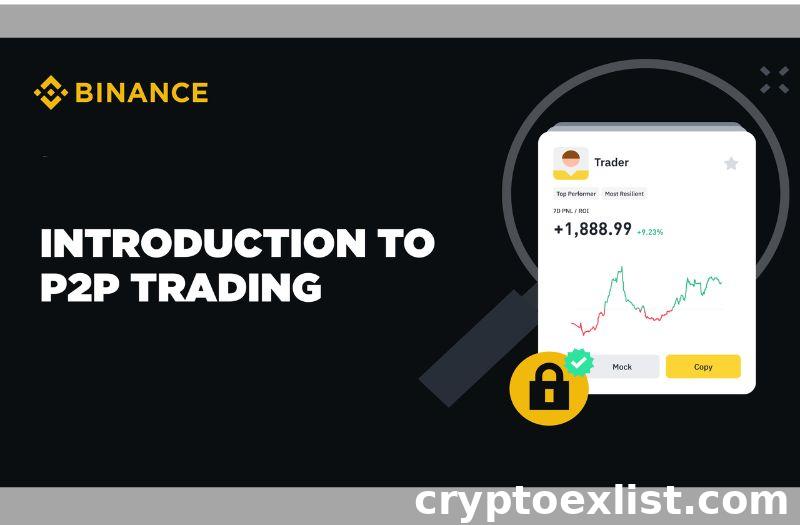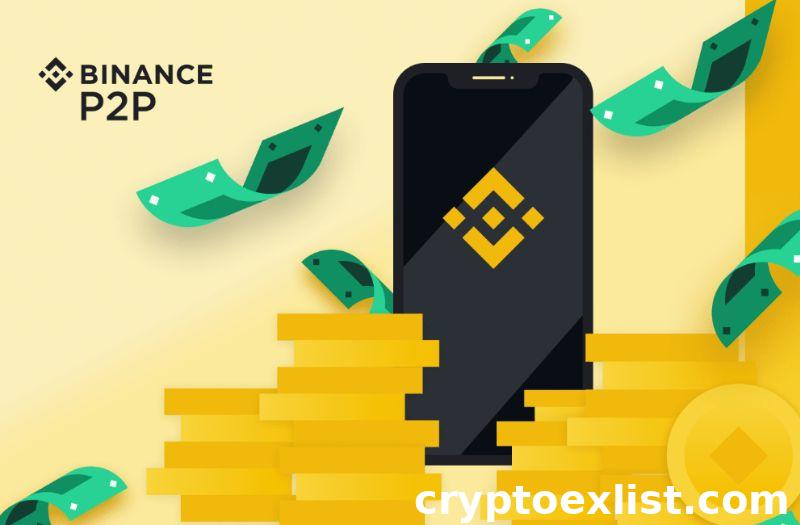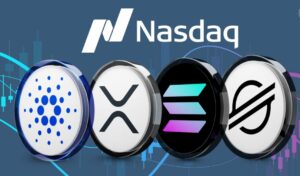
Peer-to-peer (P2P) trading is transforming how people trade cryptocurrencies by offering direct, secure, and flexible ways to buy and sell digital assets. Unlike traditional exchanges, P2P trading on platforms like Binance allows users to trade directly with one another, providing greater control over prices, payment methods, and transaction terms. In this comprehensive guide, we’ll explore how Binance P2P trading works, its benefits, key components, and the operational processes that make it accessible to both beginners and experienced traders alike. Whether you’re just starting your crypto journey or looking for a more flexible trading option, understanding P2P trading is a valuable step toward financial empowerment.
Introduction to Binance P2P Trading
Binance P2P (Peer-to-Peer) is a unique feature on the Binance platform that allows users to trade cryptocurrencies directly with each other, without the need for intermediaries. This decentralized approach gives traders more flexibility and control over their transactions by letting them choose their preferred payment methods and negotiate terms directly with other users. For newcomers, Binance P2P is an excellent way to buy or sell crypto using local currencies while enjoying the security and reliability of the Binance platform.
One of the major benefits of Binance P2P is the zero trading fees, which makes it an attractive option for those looking to avoid the higher fees associated with traditional trading methods. Additionally, the platform offers a wide variety of payment methods, including bank transfers, mobile payments, and other local options, making it convenient for users across different regions. Binance P2P also integrates an escrow service, ensuring that funds are securely held until both parties confirm the transaction, which adds an extra layer of trust and safety for all users involved.
For beginners, Binance P2P is a simple and user-friendly way to enter the cryptocurrency market. The process is straightforward: after registering on Binance, you can access the P2P section, select your preferred cryptocurrency, and browse listings from other users. By leveraging Binance’s reputation for security and reliability, Binance P2P offers a safe and flexible environment for new traders to get started in the world of cryptocurrency.

Key Components of P2P Trading
When diving into Peer-to-Peer (P2P) trading, it’s essential to understand the key components that make it unique and effective. For newcomers, these elements may seem complex at first, but once you grasp how they function, you’ll realize why P2P trading offers such flexibility, security, and accessibility. From the structure of the peer-to-peer network to the role of smart contracts and the diverse range of assets involved, each component works together to create a decentralized trading environment that appeals to both beginners and experienced traders alike.
Peer-to-Peer Network Structure
The core of P2P trading is its decentralized network structure, which allows individuals to trade directly with one another without relying on a central authority or intermediary. Unlike traditional exchanges, where a central platform facilitates the trade, P2P platforms connect buyers and sellers directly. This decentralized system provides greater autonomy and control for users, as they can negotiate terms, set prices, and choose their preferred payment methods. Platforms like Binance P2P enhance this network by integrating tools like escrow services and ratings to ensure both parties are protected during transactions. For newcomers, this network structure offers the freedom to trade with peers globally, while still enjoying the security and transparency that comes with a trusted platform.
Role of Smart Contracts
One of the most important technological innovations supporting P2P trading is the use of smart contracts. Smart contracts are self-executing contracts with the terms of the agreement directly written into code. These contracts automatically enforce the conditions of a trade, ensuring that both parties uphold their end of the deal. For example, in a P2P trade on Binance, the smart contract can ensure that the cryptocurrency is only released to the buyer once the payment has been confirmed. This automation reduces the need for intermediaries, increases transparency, and ensures that all transactions are secure and tamper-proof. Smart contracts also lower the risk of fraud and disputes, making them an essential component of P2P trading platforms, especially for beginners who may be wary of potential scams.
Cryptocurrency and Traditional Assets
P2P trading platforms like Binance allow users to trade a wide range of assets, including both cryptocurrencies and, in some cases, traditional assets. While the primary focus is on cryptocurrencies like Bitcoin, Ethereum, and stablecoins, some P2P platforms also facilitate trades involving fiat currencies, commodities, or even physical goods. This flexibility makes P2P trading a versatile option for those looking to diversify their portfolios. For example, a user may choose to buy Bitcoin with their local currency or exchange Ethereum for another digital asset, all within a secure, decentralized framework. The ability to trade both crypto and traditional assets gives users more opportunities to hedge against market volatility, explore arbitrage strategies, or simply access new forms of value.

How P2P Trading Platforms Operate
For beginners, understanding how Peer-to-Peer (P2P) trading platforms like Binance operate is essential to getting started with trading cryptocurrencies securely and efficiently. Unlike traditional exchanges, where a central authority oversees all transactions, P2P platforms facilitate direct trades between users. This system gives you more control over your trades, prices, and payment methods. Let’s take a look at the key operational steps, from user registration to transaction execution, so you can feel confident navigating the world of P2P trading.
User Registration Process
The first step to start trading on a P2P platform like Binance is registering for an account. The registration process is straightforward and typically requires you to provide basic information like your email address and create a secure password. As part of security measures, platforms like Binance will often require you to complete Know Your Customer (KYC) verification. This involves submitting identification documents such as a passport or driver’s license to confirm your identity. KYC ensures that the platform complies with legal regulations and helps prevent fraud, providing a safer trading environment for all users. Once you’ve completed the registration and verification, you’ll be ready to start exploring P2P trading options.
Listing Assets for Trade
Once registered, the next step is listing your assets for trade if you’re a seller. On P2P platforms like Binance, you can list a wide range of cryptocurrencies, from Bitcoin to stablecoins like USDT. To list your asset, simply select the cryptocurrency you want to sell and set your desired price. You’ll also choose your preferred payment method, such as bank transfer, mobile payment, or other options available in your region. This flexibility allows you to customize your offer to attract buyers who are looking for specific payment methods or prices. The listing process is quick, and once posted, your trade offer will be visible to potential buyers browsing the platform.
Matching Buyers and Sellers
Matching buyers and sellers is a key feature of P2P trading platforms, and platforms like Binance have made this process seamless. Once a trade offer is listed, potential buyers can view it and initiate a trade. For buyers, the platform allows you to filter listings by payment method, price, or currency, making it easier to find the best deal. Binance uses an efficient system that displays trade offers based on real-time market prices, ensuring that buyers and sellers can find each other quickly. Additionally, users can communicate directly through the platform to negotiate terms, creating a personalized trading experience.
Transaction Execution Process
Once a buyer has selected a trade offer and agreed to the terms, the transaction execution process begins. Binance P2P uses an escrow system to hold the seller’s cryptocurrency until both parties have confirmed the transaction. The buyer sends the payment through the agreed method, and once the seller confirms receipt, the platform releases the cryptocurrency from escrow to the buyer’s wallet. This process ensures that both parties are protected, reducing the risk of fraud and providing a secure environment for executing transactions. Binance’s escrow feature gives peace of mind to users, especially for those new to P2P trading.
User Authentication
User authentication is a critical part of ensuring security on P2P trading platforms. Binance requires users to complete identity verification through KYC protocols to authenticate their accounts. This helps prevent illegal activities like money laundering and ensures that all users on the platform are legitimate traders. Additionally, Binance employs two-factor authentication (2FA) to provide an extra layer of protection, requiring users to enter a verification code sent to their mobile device when logging in or confirming transactions. For beginners, knowing that Binance prioritizes security through robust authentication processes makes P2P trading a safer choice.
Order Placing Function
On Binance P2P, placing an order is a simple process, whether you’re buying or selling. For buyers, you can browse available listings, select the one that matches your needs, and place an order by entering the amount of cryptocurrency you want to buy. Similarly, sellers can place orders by listing their assets, setting the price, and waiting for a buyer to initiate the trade. The order placing function allows both parties to clearly define their terms, including the amount, price, and payment method, making the trading experience straightforward to manage. Once the order is placed, the platform ensures that the transaction follows the necessary steps for successful execution.

Conclusion
P2P trading has become an essential part of the cryptocurrency landscape, offering a decentralized, user-driven alternative to traditional exchanges. With its flexible payment options, enhanced security through escrow services and smart contracts, and a direct connection between buyers and sellers, P2P trading is ideal for users seeking more control over their trades. By understanding the core components and processes behind P2P trading on platforms like Binance, beginners can confidently take advantage of this efficient and personalized trading method. Whether you’re listing assets for sale or buying crypto directly from another user, P2P trading opens the door to a more accessible and secure way to engage with the crypto market.























